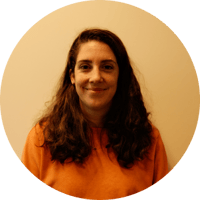Cities face the challenge of organizing mobility efficiently without compromising livability. In Leuven, InTouch’s parking vouchers and access permits play a key role in this policy. We spoke with Katrijn Pipijn, Mobility Advisor, and Sam Debruyn, Mobility Specialist for the City of Leuven, about how these digital solutions make life easier for residents and visitors.
How has InTouch changed the parking policy in Leuven?
Katrijn: The parking policy itself hasn’t changed, but the way we manage it has. Previously, we worked with another provider, and it didn’t always run smoothly. When we switched to InTouch, the implementation was super fast, and finally, our staff had a system that actually ran smoothly.
Sam: The e-portal especially is a gamechanger. Everything is clear, and with the timeline feature, we can see exactly who is parking where and when. It used to be much more cumbersome. It allows us to work more efficiently and respond faster to residents’ questions.
How does the e-portal work, and why is it an improvement?
Katrijn: Through the digital e-portal, residents can easily manage their parking vouchers and request access permits. The system is intuitive and saves both us and citizens a lot of administrative hassle.
How do parking vouchers make residents' lives easier?
Katrijn: I hear from residents that they love it. Whether it’s a cleaner, a plumber, or grandparents visiting — they can let their visitors park easily without extra costs. This means residents experience less stress when having someone over.
Sam: It’s really about hospitality. People don’t feel like they’re forcing their visitors to pay, which contributes to a higher quality of life in the city. “People find it super convenient that they can easily provide their cleaner or a tradesman with a parking option,” says Sam. “It makes them feel like they’re not forcing their visitors to pay.”
Why are access permits and cuts being implemented in Leuven?
Katrijn: To improve livability. Many streets were built in an era of lower traffic, but the city has grown. By keeping through-traffic out, these neighborhoods remain pleasant places to live. It’s a conscious choice to create a calm, low-traffic environment where cyclists and pedestrians feel safe.
Sam: It works, although it takes some getting used to. Retailers and suppliers sometimes have to take a different route, but residents experience much more peace in their streets. It’s a long-term solution for better quality of life and reduced pollution in the city.
How do residents react to these changes?
Katrijn: Residents are satisfied. We see improved air quality and less traffic in residential streets. The figures confirm it: traffic shifts to the ring roads, just as intended. Of course, adjustments are sometimes needed, but we’re open to feedback and continually make improvements where necessary.

How does data help in optimizing parking policies?
Sam: We currently collect mainly basic figures, such as the number of permits requested per zone. But we want to look in more detail, for example at the street level. Then we can map trends and further refine policy.
Katrijn: That way, we can also anticipate future policy decisions. For example, do we want to set a maximum on resident parking permits? Data helps us answer those questions. We can also give targeted advice to the city council and respond quickly to changes in traffic flows.
What are the future plans for parking and mobility in Leuven?
Katrijn: A new city council is coming in, and we want to advise them based on the data we collect. We follow international trends and see how we can make Leuven even more livable.
Sam: InTouch is a huge help here. Their modules for parking vouchers and access permits make our work more efficient and give us the insights we need to make smart decisions.
What is the impact of these measures on the city?
Katrijn: Of course, we tend to hear complaints more often than compliments, but if you really talk to residents, you’ll find that they do notice the positive effects: calmer streets, less cruising for parking, and a more pleasant living environment.
Sam: You can see it visually, too. Where cuts have been introduced, traffic in residential areas has decreased, and you see more cyclists and pedestrians on the streets. We know it works, and we’ll continue to look for ways to improve it further.
Wat would you like people to know about these digital mobility solutions?
Katrijn: That they really make a difference. These aren’t arbitrary rules but targeted measures that make the city more pleasant. And thanks to InTouch’s digital tools, we can manage these solutions efficiently and in a user-friendly way.
Sam: It’s about finding a balance between accessibility and livability. Thanks to parking vouchers and access permits, we can manage mobility smartly without inconveniencing residents or visitors. And that’s what it’s all about in the end!
Conclusion
Smart parking, smoother traffic flows, and a more pleasant city — Leuven shows how it can be done. Thanks to InTouch’s parking voucher and access permit modules, the city remains accessible and livable without compromising on mobility. Innovation and smart data analysis make it possible to continuously improve and adjust.
Want to learn more about how Leuven is digitizing its mobility policy? Discover how InTouch helps cities make parking and mobility smarter and more efficient.





